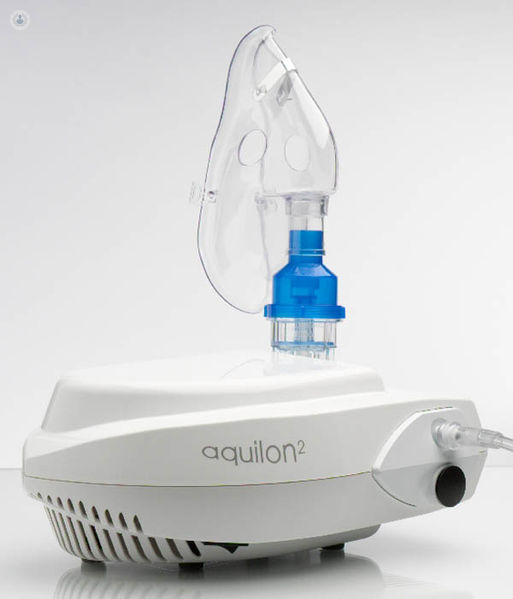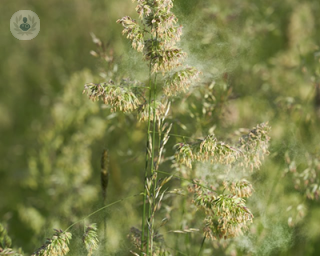Nebulisers
Dr Pierluigi Struzzo - Pulmonology & respiratory medicine
Created on: 02-03-2016
Updated on: 04-18-2023
Edited by: Carlota Pano
What is a nebuliser?
A nebuliser is a device that turns a liquid medicine into a mist. This mist travels through a plastic tube that connects to a mask which you place over your mouth. Nebulisers are small and easily transportable devices, and can sometimes be used at home.

Why are nebulisers used?
Nebulisers are useful in the treatment of lung diseases, including:
- severe asthma
- COPD
- cystic fibrosis
- bronchiectasis
They are generally used in emergency situations where you are finding it difficult to breathe. Sometimes, a nebuliser is used to treat young children if they are unable to use another device.
The advantage of a nebuliser over an inhaler is that it can be used to deliver a higher dosage of medication. This can include reliever medicine to open up the lungs, steroids, or antibiotics.
What happens during a nebuliser treatment?
Treatment with a nebuliser usually takes between five to 10 minutes.
It is important to make sure the mouthpiece is fully over your mouth, and if you are using a facemask, over your nose as well. Try to take normal breaths, and sit up if you can.
Preparing your nebuliser before use
Precise instructions for nebuliser use vary from model to model, but common steps in setting up a nebuliser include:
- Washing your hands with soap and water
- Measuring with a syringe the medication indicated by the specialist, along with the appropriate amount of saline solution
- Making sure the nebuliser chamber is held upright
- Regulating the amount of mist at half power for children
Aftercare
You will need to wash the nebuliser after use. This involves:
- Disassembling the appliance, washing all the parts (except the valve and the pipe) in a dish with warm water and soap, then rinsing them with water
- Shaking off excess water
- Leaving the parts to air dry
The next time you use your nebuliser you may notice a small amount of saline solution left over in the cup – it is important to dispose of this and start with a fresh saline solution.


